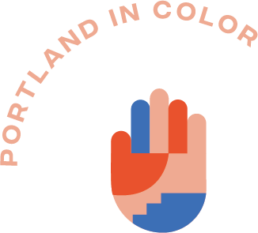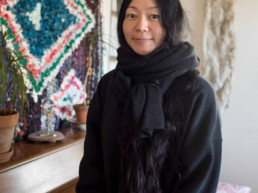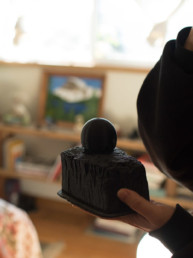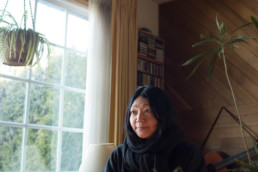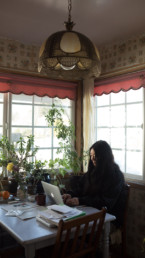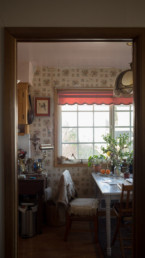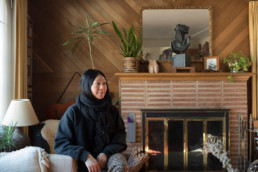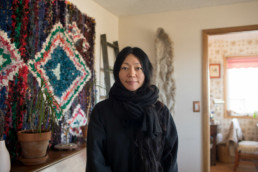MIDORI HIROSE
“A lot of my work involves things that are always present but are usually overlooked, so I really wanted to engage with people in the community who weren’t prominent”
Name: Midori Hirose
Pronouns: she/her
Background: Japanese American descent. I’ve always been interested in art—visual arts, arts of all kinds, community art.
Medium of choice: Sculpture working with various materials. Currently: clay, recycled plastics. But from there it depends on the project I’m working on or things that I work toward.
Karaoke jam: “Love Me Tender” by Elvis Presley and “La Bamba” by Ritchie Valens
Local artists whose work inspires you: I really wanna see sidony [o’neal]’s work over at Fourteen30. And Taka[hiro Yamamaoto] and Lu [Yim]. They do performance art. They go by Physical Education. I really like how they collaborate with people—different folks from different backgrounds, and who work in different mediums.
WEBSITE
www.midorihirose.info
INSTAGRAM
@plastic.vision
Midori Hirose was eight years old when she decided she wanted to do exactly what her parents told her not to do: become an artist. Her family had moved to Portland by way of Vancouver, Washington and Hood River, Oregon. Growing up, Hirose’s weekends were spent at the Portland Saturday Market helping her parents sell their handmade jewelry and kaleidoscopes. During the week, she’d put on a mask and dive on into the making process with her parents in their garage. Today, sculpture is her primary medium, and her artistic process is fixed on fluidity. Art, for Hirose, is an exchange. A push-and-pull. A circuit equally powered by herself and the community where it exists.
When did Portland become home for you?
Portland’s been home for me since I was a kid. I did move away in my early twenties. I visited Japan to learn about my roots, taught English there in my parent’s hometown, and I was able to reconnect, or really connect, with my extended family and grandparents there. And then I came back.
“When it comes to art, one thing that I believe in is just being open and have it be super accessible to anybody, any age, any background.”
What’s one project you’re particularly proud to have worked on?
I was invited by PMOMA and the Museum of Contemporary Art Santa Barbara to put together an exhibit [called Of the Unicorn (and the Sundowner Kids.)] They were open to any sort of work that I wanted to present and at the time I just really wanted to connect with the community. A lot of my work involves things that are always present but are usually overlooked, so I really wanted to engage with people in the community who weren’t prominent, but who were a huge part of Santa Barbara. It was great. My work involves not forcing the practice in any way. It’s very important that it’s fluid.
During my visits to Santa Barbara, I met an Indonesian immigrant who lived there and worked seven days a week at a motel. We just had a really great connection and that evolved quickly into a bust of her. She invited me to a French festival. She said, ‘You know, you’re an artist!’ That’s how she related to art… French = Art. We went to the festival and I got her a hat, and that became her ‘thinking cap.’ I motorized the thinking cap so that it would go in circles on the bust that I created.
[The exhibit] also referenced the acorns that were very prolific in the area because the oak trees down there. I met with Chumash elders and they told me how they used to make acorn soup. That was a sort of a staple in the area. These trees provide acorns that we use as food for people, and ironically, provide food for fires. Fires are prolific there. I loved the idea of how that worked as a cycle—making connection with people in these worlds, when it can be totally unexpected.
You’re a teaching artist and I also noticed that you and some of your friends host “Meatspace” where you invite people to make edible sculptures. What’s your experience has been like introducing folks of all ages to sculture in particular?
Meatspace is a triennial event. When it comes to art, one thing that I believe in is just being open and have it be super accessible to anybody, any age, any background. That’s really important and has always been my approach. Like working with edible materials, like food, and being able to just have a free, loose creative process. I really love that because no matter what age, it just really blows my mind when so and so are doing this, and I would have never thought of that!
What are you currently working on? What’s next?
I recently came back from Japan doing a residency there in Sapporo and I’ve been interested in Shigin which is a form of secular chanting that’s been going on since the fifth century. It’s kind of a dying art form, so I was able to meet folks there. They were really surprised because they expected someone older—elders normally do these chants. The compositions are poetry written out and there are no musical notations. It’s usually when they have the poetry written out, they will add these sort of abstracts marks that are noted next to it, so they know when to have those inflections.
Music has been really strong and at the forefront when it comes to my work. I also met with Natsuki, an indigenous Ainu person from Japan who sang and danced at an Ainu performance in Sapporo. The Ainu were the first people who were in Japan. It was really great to meet with her and members of the Ainu community.
I don’t know how that would translate into my work, but I guess I dabble in forms of music in ways. While I do sculpture, I like to balance it out with other projects. I’m also in a band called Champagne which is an experimental band. We do a lot of experimental performances and I guess that I take on this—I speak in Japanese and I mix it up with things that are incoherent.
Last time we performed in Linda Austin’s studio space which was great and Turn Turn Turn. It’s been great fun because I didn’t realize while performing I insert myself quite a bit where colleagues and friends are just like “Woah, you’re scary. This is different side.” It’s interesting how you can take something else on and become something else, in different forms.
How can Portland support you and/or your community?
Some things that come to mind that Portland can do to help artists feel welcome is to reach out. When I say reach out, to really reach out and not only contact POC, but to get involved in POC art communities. Get to know one’s audience by participating in their circles. Develop a network and learn what it takes to involve POC to feel welcome in the arts in Portland and beyond. Travel and funding can be obstacles that may be overlooked, for instance. I’m on various committees, however they are usually unpaid positions. I do it for the love of art and looking at the big picture, but it definitely can be a challenge being a POC freelancer to take on these sort of roles. I’m all for everyone to look with fresh eyes and not to take things as a given or for granted.
